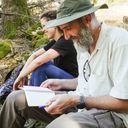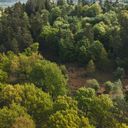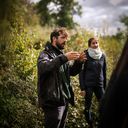Meet the team behind EcoTree
Based in France, Denmark, and Germany, our diverse team of foresters, specialists, and innovators are dedicated to restoring European ecosystems, whilst driving real and tangibale climate action.




We believe in fostering a supportive and collaborative environment within our team and with our partners. Rather than focusing on shortcomings, we choose to uplift one another, sharing strengths and growing together through collective effort.
Nature is our teacher. Working to restore and protect it reminds us that we are part of something much greater. No matter how advanced our methods, we remain grounded in the understanding that nature leads the way; we follow with respect and care.
We are honoured by the trust our clients place in us. This trust drives our deep sense of responsibility. Every project we undertake is guided by integrity, transparency, and a commitment to delivering long-term value for both people and planet.

Forests planted and managed, wetlands restored, and biodiversity preserved.
Individuals across the globe have joined us in restoring European ecosystems.
Companies work with us to take meaningful action and meet their ESG goals.
We have commercial and expert field forestry operation across Europe.

Based in France, Denmark, and Germany, our diverse team of foresters, specialists, and innovators are dedicated to restoring European ecosystems, whilst driving real and tangibale climate action.

Huge amounts of capital are being invested in projects that harm the planet. But we believe this money can and should be used to support positive change.
Instead of funding harmful industries, finance can be directed towards sustainable projects like the ones we’re building at EcoTree. By investing in renewable energy, energy efficiency, and projects like reforestation and biodiversity protection, finance becomes a tool for environmental restoration.
The good news is that financial instruments like green bonds and carbon credits are making this shift possible. Investors are starting to see climate risks like extreme weather or the decline of fossil fuels as part of the bigger picture.
In short, financing the right projects can drive the change we need. It’s about choosing to fund solutions that protect the planet, not projects that harm it.
Companies can reduce their climate impact by measuring their emissions (Scopes 1, 2, and 3) and setting clear reduction targets aligned with the Paris Agreement.
This includes improving energy efficiency, choosing sustainable suppliers, using renewable energy, and designing low-carbon products and services. Companies can also rethink mobility (e.g., electric fleets, remote work) and raise employee awareness.
Beyond reducing their own emissions, companies can fund projects that protect the environment, like reforestation, or buy certified carbon credits. Transparency and communication with customers, investors, and partners are key to building trust in their climate efforts.
In short, acting for the climate means reducing emissions, innovating for sustainability, and supporting the world.
Companies are major contributors to climate change through their activities, emitting greenhouse gases directly (e.g., energy use, production, travel) or indirectly (e.g., supply chains, product use). This makes them central to solving the climate crisis.
However, they also have powerful tools to reduce their impact. By adopting sustainable practices, such as energy efficiency and low-carbon materials, companies can transform their business models and influence their stakeholders, including customers, suppliers, and investors.
Climate change also poses a risk to businesses. Extreme events (e.g., fires, floods) can damage operations, and changing regulations, carbon pricing, and shifting consumer preferences can impact profitability.
So, while companies contribute to the problem, they are also essential to the solution through innovation, investment, and transforming the economy.
While governments are responsible for addressing climate change, they often struggle to take urgent action. This leaves companies in a unique position to step up. As major emitters, companies can take immediate action to reduce their emissions, transform supply chains, and develop low-carbon solutions.
They are also under pressure from customers, investors, and employees to act where governments are slow.
Companies are essential in the fight against climate change because of their ability to act quickly and internationally, helping fill the gaps left by governments and driving faster change.
Get in touch with our team to learn how we can help support your sustainability goals (i.e. SBTi, Net Zero or CSRD) and create long lasting environmental impact.